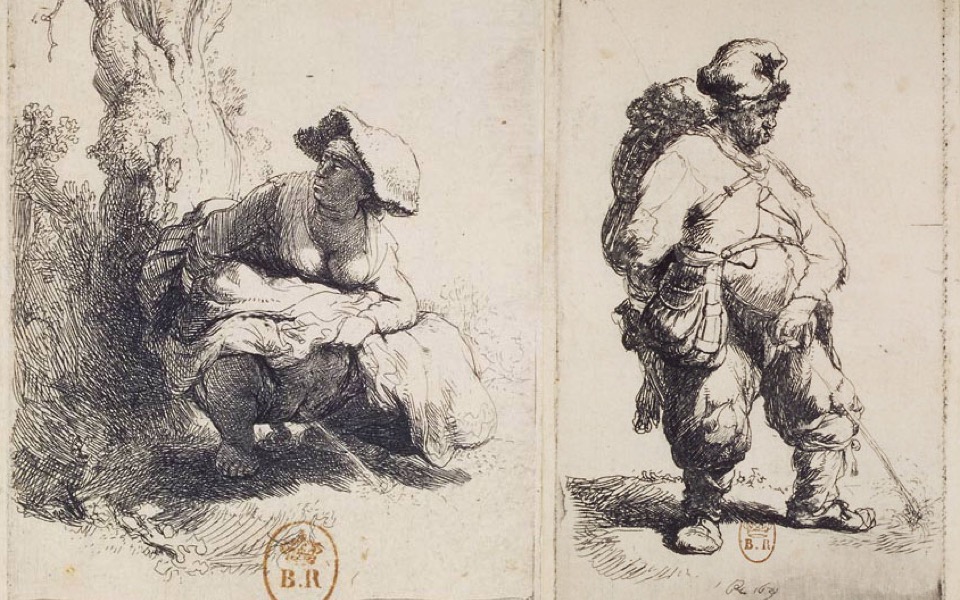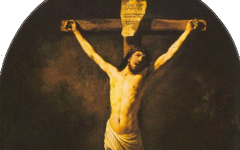Rembrandt’s Self-portrait in Sixteenth-Century Costume (1638)
Scholars have long wondered why Rembrandt would represent himself in expensive and extravagant clothing from a century earlier even though they know that the etched self-portrait is based on an engraving of the fifteenth-century painter Jan Gossaert, known as Mabuse (see next image). Unaware of the long tradition in which great masters have imagined themselves as earlier great masters, today’s scholars assume Rembrandt borrowed Mabuse's pose without meaning. Yet, in borrowing the pose of a great master and in dressing himself in the clothes of success, Rembrandt symbolically represents himself as a member of the canon even though, at around thirty-four years of age, he was not yet certain of his immortality.
See also Rembrandt’s Self-portrait at a Window
More Works by Rembrandt
Find out why people pee on etchings

Rembrandt’s Man Making Water (1631) and Woman Making Water and Defecating (1631)
Notes:
Original Publication Date on EPPH: 20 Apr 2010. | Updated: 0. © Simon Abrahams. Articles on this site are the copyright of Simon Abrahams. To use copyrighted material in print or other media for purposes beyond 'fair use', you must obtain permission from the copyright owner. Websites may link to this page without permission (please do) but may not reproduce the material on their own site without crediting Simon Abrahams and EPPH.




